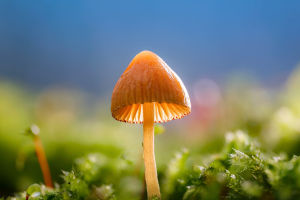Dear Lykkers! Eucalyptus Ganinensis is a fascinating tree species known for its distinctive qualities and importance in the ecosystem.
If you’re an avid plant lover, an environmental enthusiast, or someone looking to learn more about unique trees, Eucalyptus Ganinensis has plenty to offer.
Appearance and Characteristics
1. Tall and Graceful Structure: The Eucalyptus Ganinensis is a tall, evergreen tree that can reach impressive heights of up to 50 meters. It features a straight trunk and smooth, greyish bark that sheds annually, revealing a fresh, smooth surface underneath. The shedding bark gives the tree its distinct, layered appearance.
2. Leaves: The tree’s leaves are lance-shaped and glossy, with a blue-green color. Young leaves are often more rounded, while mature leaves elongate and have a pointed end. These aromatic leaves contain essential oils that make them highly valuable in various industries.
3. Flowers: Eucalyptus Ganinensis produces small, white or cream-colored flowers in clusters. These blooms are not only beautiful but also attract pollinators like bees, making the tree an essential part of the ecosystem.
Growing Eucalyptus Ganinensis
1. Ideal Climate: Eucalyptus Ganinensis thrives in warm, temperate climates and is well-suited to dry environments. It’s highly adaptable and can survive in poor soils, making it a popular choice for reforestation projects and areas prone to soil erosion.
2. Soil Requirements: The tree prefers well-drained soil with good aeration. It can grow in a variety of soil types, including sandy, loamy, and clay soils, as long as they aren’t waterlogged. Adding organic matter to the soil can enhance its growth.
3. Watering and Care: Once established, Eucalyptus Ganinensis is highly drought-tolerant. However, young saplings require regular watering until they become more resilient. It’s important not to overwater the tree, as this can lead to root rot.
Eucalyptus Plant Care l How to Preserve Eucalyptus with Glycerin
Video by #Mavigation
Uses and Benefits
1. Medicinal Properties: One of the most well-known uses of Eucalyptus Ganinensis is its medicinal properties. The leaves contain essential oils rich in eucalyptol, which has antibacterial, anti-inflammatory, and decongestant effects. These oils are often used in remedies for respiratory problems, such as colds, asthma, and bronchitis.
2. Aromatherapy: Eucalyptus oil derived from the leaves of this tree is widely used in aromatherapy. The refreshing scent is believed to improve mental clarity, reduce stress, and boost energy levels. Diffusing eucalyptus oil at home can create a calming and invigorating atmosphere.
3. Industrial Uses: Eucalyptus Ganinensis is also valued for its wood, which is used in construction, furniture making, and paper production. Its fast growth rate and ability to thrive in less-than-ideal conditions make it an excellent choice for sustainable forestry.
4. Environmental Benefits: This tree plays an important role in preventing soil erosion, especially in areas prone to degradation. Its extensive root system helps stabilize the soil, making it an ideal species for reforestation and land reclamation projects.
Cultural and Symbolic Significance
Eucalyptus trees, including Eucalyptus Ganinensis, hold cultural significance in many indigenous communities in Australia. They are often associated with healing, strength, and protection. The wood and leaves have traditionally been used in ceremonies, medicinal preparations, and even as tools for everyday life.
Eucalyptus Ganinensis is more than just a striking tree with aesthetic appeal; it’s a versatile species that offers a wide range of benefits, from its medicinal properties to its environmental impact. No matter you’re planting one for its beauty, using its oil for health reasons, or contributing to a reforestation project, this resilient tree proves to be an essential and enduring part of our natural world.


